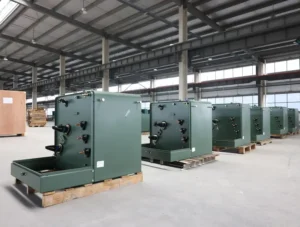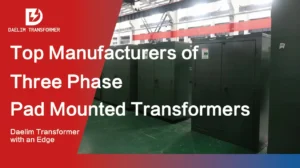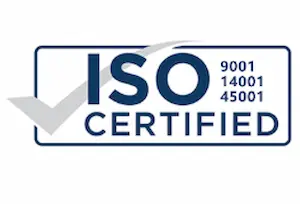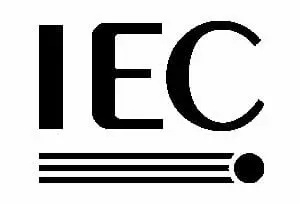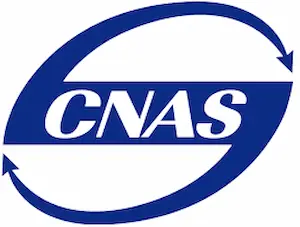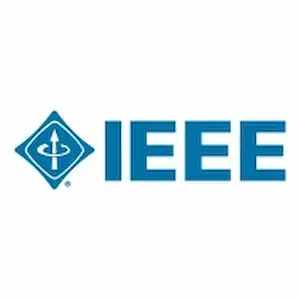Electrical Transformers Selection and Buying Guide
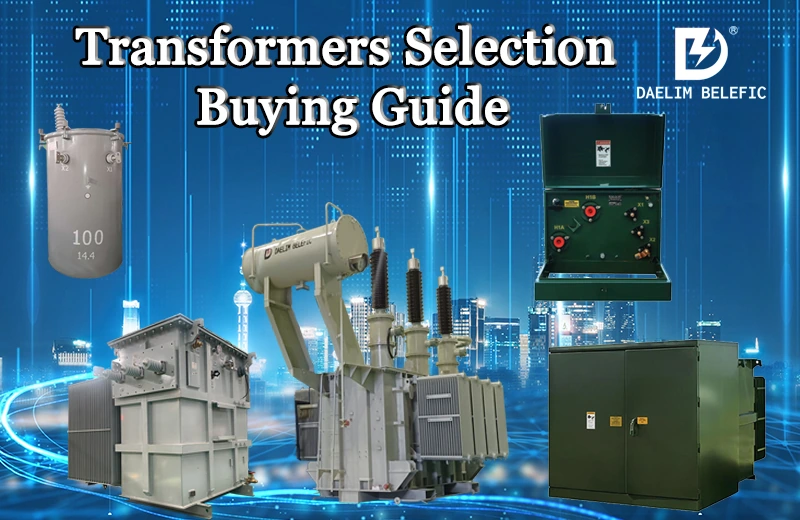
A transformer is a static electrical device that uses electromagnetic induction to move electricity from one voltage system to another. At their most basic level, all transformers are made up of a magnetic core that conducts the electric current. Before buying a transformer, it’s crucial to identify the type best suited for your location. Here are ways to help you select what kind of transformer to buy.
Daelim is a professional and famous transformer supplier. Serve global customers in North America, South America, Oceania, Europe, Asia and other global customers. Professional teams help you buy the most suitable transformers.
Small-substastion Transformer
Single Phase Pole Mounted Transformer
Oil Immersed Power Transformer
Table of Content
What is a transformer, and why is it used?
In a nutshell, a transformer is a piece of equipment used to transmit electricity. It uses alternating current (AC) for transmission. It is typically used to alter the voltage level without affecting the AC between circuits. Mutual and electromagnetic induction’s fundamental principles drive how the transformer operates.
Transformers are the center of the substation. A transformer modifies the link between the input voltage and current and the exiting voltage and current. Substation transformers are graded based on how well their primary and secondary voltages match up and how much power they can handle.
Transformers have many uses. But its main purpose is to either step up or down the voltage, also referred to as voltage rise or drop.
In a transformer, a metal core is encircled by two coils of wire, each with tens or hundreds of turns. Both the incoming and exiting electricity flow through separate coils. The AC is produced in the outgoing coil due to an external magnetic field created in the core by the receiving coil alternating current.
learn more:Oil Type Transformer
How can I select the best transformer for my application?
Transformers come in a wide range of voltages. A device’s capacity, usually measured in volt-amps, determines how much power a transformer can use before exceeding its load capacity.
Selecting the appropriate transformer depends critically on the application. When choosing a specific transformer, you should consider the circumstances where the normal load may surge.
Here are the steps to follow when selecting the best transformer.
Step 1: Calculate And Identify The Electrical Load
For Single Phase Transformer

Single phase
kVA=(Volts x Amps)/1000
kVA=kw/0.85
AMPS=(kVA x 1000)/Volts
For Three Phase Transformer

Three phase
kVA=(1.73 x Volts x Amps)/1000
kVA=kw/0.85
AMPS=(kVA x 1000)/(1.73 x Volts)
kVA, often known as a 1,000-volt-ampere, is a unit of electrical power. 500 VA is equal to 0.5 kVA for smaller appliances. Two AC transmission lines are included in a single-phase pad mounted transformer. While three AC transmission lines are used in a three-phase pad mounted transformer, each line is 120 degrees out of cycle from the other two.
The transformer’s kVA must match or exceed that of the load to handle existing demands and accommodate for any future growth.
Step 2: Identify The Supply Voltage
Determine the voltage that should be used to connect to the transformer’s primary supply, also known as the available voltage. The energy you can get from your utility or nearby power source is called line voltage, sometimes called primary voltage.
When choosing a transformer, ensure the electrical load and line supply frequency match. Choose a single-phase transformer with an input equivalent to the voltage supply and an output equivalent to the load’s demand. It should be built to operate at the same frequency.
Step 3: Calculate The Voltage Required By The Load
Find out what voltage the load needs. Calculate the voltage that the load requires. This value represents the transformer’s secondary or output voltage.
On the other hand, the voltage necessary to power a load is known as the secondary voltage. It’s often used to power lights, motors, and other devices.
Get it now: The Ultimate Guide To Transformer Designs
When do you need a custom transformer?
Power transformers can be custom-designed and documented by the majority of manufacturers. Furthermore, you can create and record your unique transformer designs with their help. From the choice of core and bobbin to the winding stacking design, winding sequence and even margin tape must be considered
You can customize a transformer under the following circumstances
- You want to change the bobby pin. Your option of bobbin will be determined by different criteria, including the number of pins required to properly end each winding, the orientation of the bobbin, and the winding window size. Certain manufacturers provide many common bobbins, but you can also insert your custom bobbins by using the Bobbin Library.
- You want to alter your winding parameters. You have complete control over every aspect of the primary winding, down to the smallest detail. Regardless of their wire type or winding arrangement, all secondary windings can be configured with the same set of choices.
- You want a transformer that fits your preferred form or size. Instead of settling for a regular part that doesn’t truly fit, you might consider getting a custom part that has been properly developed for the size, and physical limits and fitting to your space.
You may enjoy: The Ultimate Guide To Renewable Power
What Are Different Kinds of Custom Transformers?
Autotransformers
Custom autotransformers have only one winding, with a section of the coil acting as the primary and secondary winding. They are frequently employed in step-up or step-down applications.
Autotransformers come in three-phase and single-phase variants and are primarily employed in low-voltage applications not exceeding 600 volts.
Single Phase Transformer

One option for changing the voltage from one end of a transformer to another is to utilize a single-phase custom transformer. The primary and secondary sides’ total number of windings collectively determine the change in voltage.
Read more: Tips of single phase transformer
Three Phase Transformer
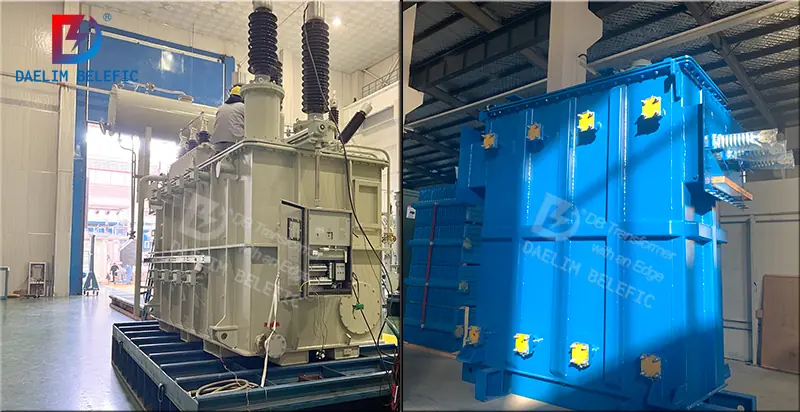
Three phase transformers have three independent windings through different connections to make them input or output three phase AC power supply. Three single phase transformers can form a three phase format transformer.
Isolation Transformer
Isolation custom transformers come in three-phase and single-phase versions and have symmetrical, insulated main and secondary windings that are physically apart from one another. Doing this allows an AC signal from one device to be sent to another without connecting the two circuits.The isolation transformer mainly plays a safe role
High-Voltage (HV) Transformer
High-voltage custom transformers are made for measuring and monitoring high-voltage circuits to determine whether safety is a problem and if the equipment can handle voltages ranging from 35 kV to 220 kV.
HV transformers are shielded from overheating by a non-combustible, heavily processed silicon or mineral oil. The equipment is protected from heat, moisture, dirt, and air pollutants through vacuum-impregnating varnish or epoxy resin.
Keep reading: High voltage transformer
Ultra -high Voltage Transformer
The effective value of AC voltage is at a voltage level with a voltage of 330 kV and 1000 kV. At present, the world’s highest operating voltage and the strongest transmission capacity are 1000kV and long-distance 5000MW transmission level.
UHV Transformer
The effective value of AC voltage is at a voltage level of 1000 kV and above.The world’s first 110kV UHV DC transmission project is independently designed and constructed in China. The line is 3293 kilometers long and the transmission capacity is as high as 12 million kilowatts.
How to choose a transformer supplier?
Consider The Commitment And The Reputation Of The Manufacturer
The manufacturer you select must have the knowledge and abilities to build a product that satisfies your quality requirements, regardless of whether you need a standard or customized transformer.
Purchasing a transformer from any manufacturing firm is useless when the product is not top-quality. Instead, you want to look for a producer with a solid industry reputation.
Quality should be the top requirement that you need to be critical about. Ensure that the manufacturing company provides its customers with top-notch goods and services. Dedication is an important motivation that enhances a company’s products and operations.
The manufacturer should have a track record of delivering only excellent products to satisfied customers. Your productivity can suffer if the company you want to work with is substandard.
Assess The Capability Of The Product
The product’s performance is equally important to product quality. The company you select needs to be able to produce a transformer that completely satisfies the needs of your application.
The manufacturer you choose should have in-depth knowledge when it comes to designing and building transformers. They should meet any transformer need and have a long experience producing different transformers.
Ability To Meet Your Needs
As you check the product’s quality, consider whether the producer can meet your requirements. The designers and experts employed by transformer industrial companies must collaborate with the clients to create a strategy suitable for meeting their objectives. Choose a manufacturer who can produce a perfect transformer for your business and work.
Rapid Assistance And Response
Always choose the correct transformer manufacturer because they can provide quick and efficient service. They keep getting back to their customers. To establish friendly ties with them, it is essential to place orders or detect problems with existing issues. Any communication breakdown or miscommunication might result in future issues and impact the expansion of your business.
Selecting a manufacturer that is approachable, accessible, and willing to reply to your questions or comments about a product’s specifications should be your top priority.
Financial Strength
An essential factor is a transformer manufacturer’s financial standing. Financial stability increases the likelihood that a company will continue to manage its manufacturing activities. This quality enables it to generate high-quality products that meet requirements when necessary.
Adaptability To Customization
In many situations, it’s possible that the typical transformers won’t be sufficient to fulfill your requirements. You’ll need a specially designed transformer in this case. Therefore, always choose a transformer manufacturer that can offer the many transformers required in various applications.
Daelim Transformer Supplier
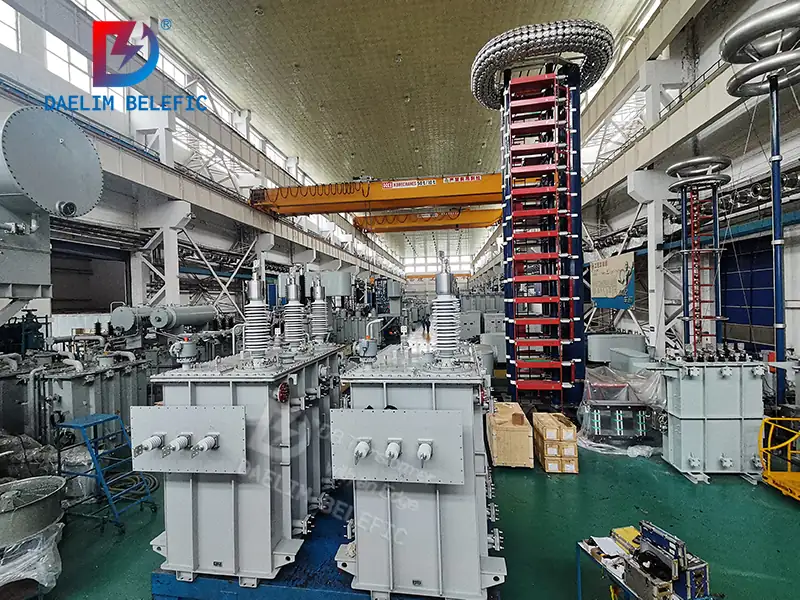
Daelim is a reputable manufacturer of power transformers; its main products include distribution transformers, dry-type transformers, small substations, and HV power transformers. Transformers with UL/cUL, CSA, CESI certificates, and meet standards ANSI/IEEE, CSA, AS, IEC, Gost, etc.
The transformers offered by Daelim are of excellent quality and affordably priced, meeting the essential requirements of the vast majority of markets. Customers love Daelim transformers. Many clients are eager to place orders with Daelim, creating a strong basis for the company’s quick growth.
Some of Daelim’s best-selling products include the following:
Single Phase Pad Mounted Transformer
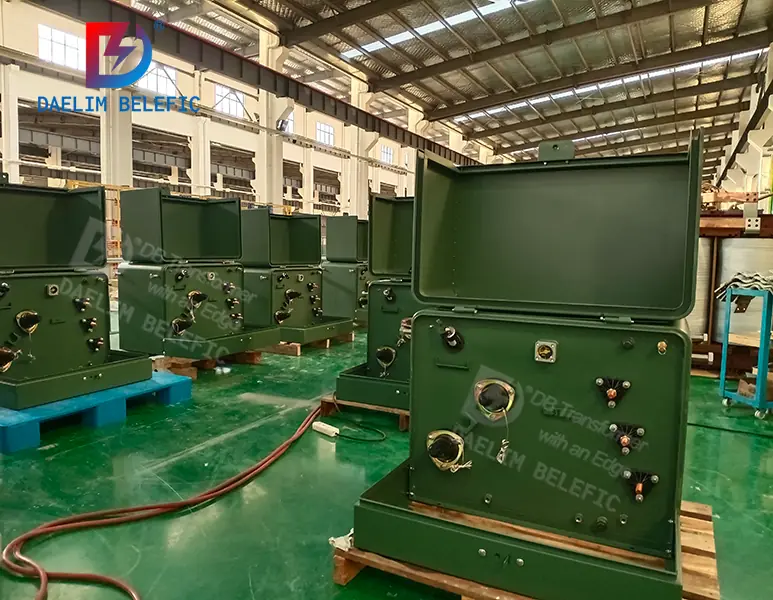
Daelim’s single phase pad mounted transformer is designed to enhance efficiency in terms of kVA rating, small dimensions, reduced weight, sustainability, and safety. It’s often used in residential neighborhoods, commercial hubs, stations, airports, companies, factories, hospitals, universities, and other locations.
The equipment is a low-profile compartment-type transformer that can be mounted outside on pads without needing extra protective casings.
Daelim’s single-phase pad-mounted transformer’s maximum capacity ranges from 15 to 250 kVA. The capacity of a single-phase pad-mounted transformer is comparatively smaller than that of a three-phase pad-mounted transformer. It is typically used in locations where single-phase electricity is needed for public use, including household appliances.
3 Phase Pad Mounted Transformers
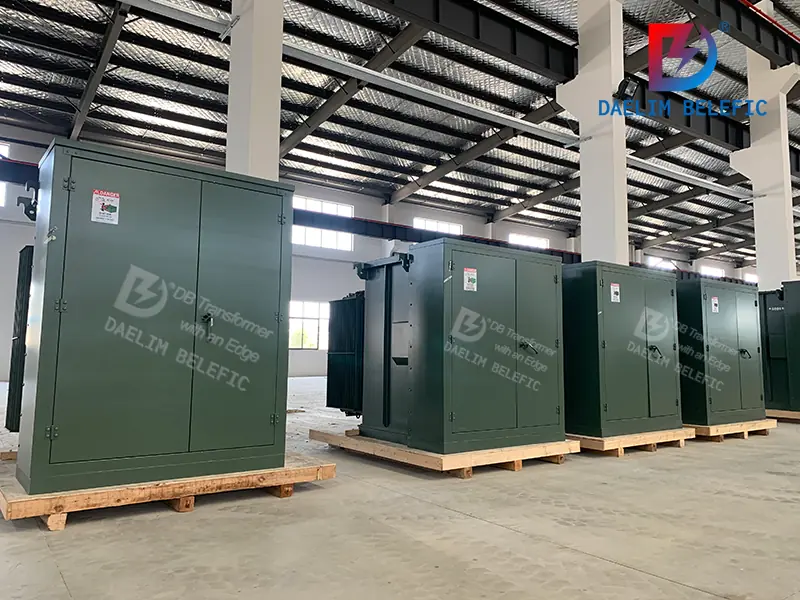
These transformers are grounded distribution transformers with locked front doors, damage-proof features, and concrete pad mounting. Dead front and live front make up most of a three-phase pad mounted transformer.
Daelim’s three-phase pad-mounted transformers have a power rating of 50–10,000 kVA, a voltage range of up to 34.5 kV, and are grounded.
In real use, a three-phase pad mounted dead front transformer accounts for more than 80% of all applications.
The front and back of a three-phase transformer’s structure are separate components. The wiring cabinet with high and low-voltage stations, high electrical load routers, plug-in fuses, high-voltage transformer tap working handles, oil level dials, oil thermometers, etc., is located in the front.
On the other hand, the body of the oil tank, the radiator, the transformer winding, the iron core, and other components are located in the back
Keep reading: 3 Phase Transformer Power Transformer Manufacturer
Dry Transformer
Three phase epoxy-resin dry-type transformers have the following characteristics: low LSS, small and lightweight, reduced noise level, humidity, high mechanical strength, flame resistance, strong overload ability, and reduced leakage quality.
Dry transformers are used with electricity distribution and transmission systems, particularly in areas with high load centers and unique fire safety needs.
1 Phase Pole Mounted Transformer
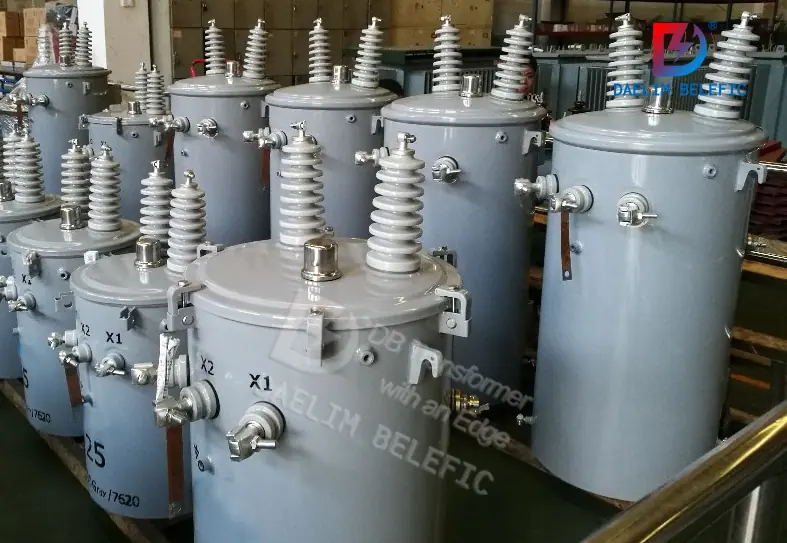
Distribution-type transformers come in single-phase, pole-mounted versions. Distribution and transmission voltages are typically stepped down to reduce utility voltages by using oil-filled standard overhead transformers, which Daelim designed and manufactured.
Most step-down converters are used to step down to the single-phase voltage of 120/240, while others are used to step down to industrial and commercial voltages like 277, 240/480, 2400, and 4800.
Daelim’s single phase pole mounted transformer has two types: standard type and Completely Self-Protected Transformers (CSP) type. Both transformers can cover a range from 5 kVA to 333 kVA.
HV Transformer

Daelim’s HV transformer is an electrical device that spreads voltage conversion, and it needs to be broadcast through a power matrix. It transforms the electromotive force that is distributed into a form that can be used in all different types of your properties, the high voltage up 500 kV. It can improve efficiency in power transmission.
Conclusion
Are you looking for the best manufacturer to buy transformers? You might want to try looking into Daelim as your transformer manufacturer. They provide a wide range of products and services that help you figure out the best kind of transformer that fits your requirements.
Daelim’s professional technical team can customize the most suitable transformer solution for you.

